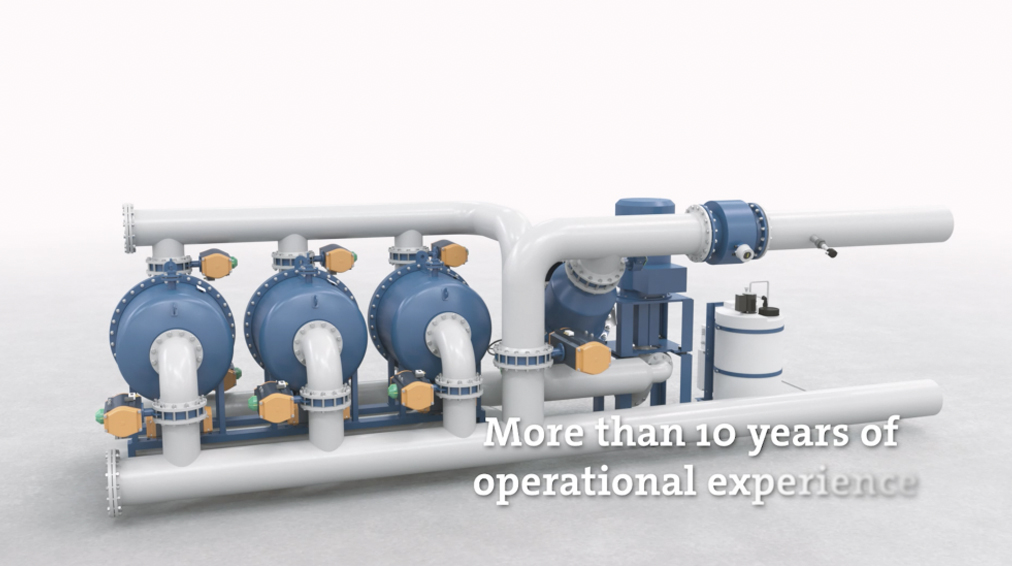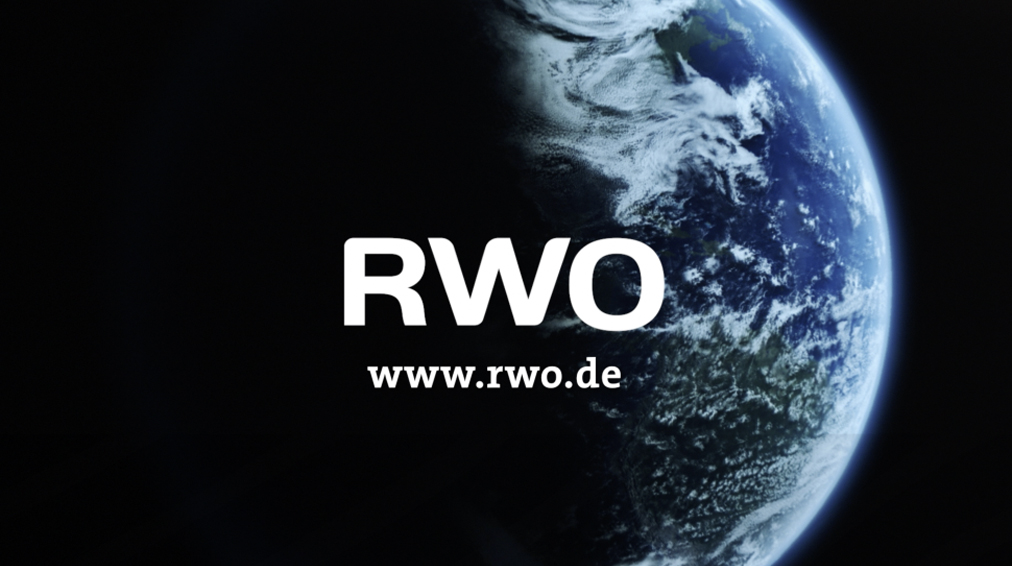Films
Video and explanatory films
With a film - whether a short teaser or an image film - good preparation is everything. Only when it is clear what is to be said and shown to whom, and what the goal of the film is, does the implementation succeed.
IMPORTANT AND CORRECT
3 reasons why you should make an explanatory film
Whether you want to introduce or explain a product, present your company or look for new colleagues: You can make the most impact with moving images. Because the attention of a film is many times higher than all other media. That's why moving images are the most popular web format: users spend a quarter of their total surfing time with internet videos. Last but not least, videos are perfect "thumbstoppers": they make users stop to take a closer look at the content.
Complex topics are often difficult to present with texts and images. In films, new products, processes or competences can be presented in a much more comprehensible and human way.
Films appeal to the viewer not only on a rational but also on an emotional level. This is good for memory and for branding your company.
3 steps to the perfect video
1.
The preparation
Imagine you are your customer or candidate - depending on whether you want to sell something or fill positions. And then ask yourself what is exciting and beneficial about your product or your company. And what the other manufacturers offer. Above all, define the takeaways: What do you want the viewer to do after the film?
But don't act alone: get all your colleagues involved in the film: Colleagues from sales who know what your customers want, developers who know what your product can do and the boss who has to approve the budget. When it comes to employer branding, it is best to ensure a broad spectrum: colleagues who are new or have been with you for a long time from all areas in which you want to fill positions.
2.
The Story
Imagine you are your customer or candidate - depending on whether you want to sell something or fill positions. And then ask yourself what is exciting and beneficial about your product or your company. And what the other manufacturers offer. Above all, define the takeaways: What do you want the viewer to do after the film?
But don't act alone: get all your colleagues involved in the film: Colleagues from sales who know what your customers want, developers who know what your product can do and the boss who has to approve the budget. When it comes to employer branding, it is best to ensure a broad spectrum: colleagues who are new or have been with you for a long time from all areas in which you want to fill positions.
3.
The implementation
Once it is clear what is to be shown and how, ask yourself what actually needs to be reshot. There are a lot of excellent stock films that offer spectacular scenes for cheap - especially drone rides over cities, landscapes, halls or industrial facilities.
Always leave the filming to a professional. Even if your smartphone has great cameras, you will never get a satisfactory result.
Computer-animated 3D sequences are playing an increasingly important role in explanatory films. They can be used to explain machines and systems in a comprehensible way - for example, with explosions that unfold and contract.
Text or speaker? Many videos are watched in the office where no loudspeaker is available. Therefore, it is wise to include all important information as text. But be careful: do not overload the films with text. Key points or catchwords are usually sufficient. Of course, a pleasant voice should not be missing: This accompanies the user through the film and formulates the story. This is especially true for recruiting films.
3 steps to the perfect video
1.
The preparation
Imagine you are your customer or candidate - depending on whether you want to sell something or fill positions. And then ask yourself what is exciting and beneficial about your product or your company. And what the other manufacturers offer. Above all, define the takeaways: What do you want the viewer to do after the film?
But don't act alone: get all your colleagues involved in the film: Colleagues from sales who know what your customers want, developers who know what your product can do and the boss who has to approve the budget. When it comes to employer branding, it is best to ensure a broad spectrum: colleagues who are new or have been with you for a long time from all areas in which you want to fill positions.
2.
The Story
Imagine you are your customer or candidate - depending on whether you want to sell something or fill positions. And then ask yourself what is exciting and beneficial about your product or your company. And what the other manufacturers offer. Above all, define the takeaways: What do you want the viewer to do after the film?
But don't act alone: get all your colleagues involved in the film: Colleagues from sales who know what your customers want, developers who know what your product can do and the boss who has to approve the budget. When it comes to employer branding, it is best to ensure a broad spectrum: colleagues who are new or have been with you for a long time from all areas in which you want to fill positions.
3.
The implementation
Once it is clear what is to be shown and how, ask yourself what actually needs to be reshot. There are a lot of excellent stock films that offer spectacular scenes for cheap - especially drone rides over cities, landscapes, halls or industrial facilities.
Always leave the filming to a professional. Even if your smartphone has great cameras, you will never get a satisfactory result.
Computer-animated 3D sequences are playing an increasingly important role in explanatory films. They can be used to explain machines and systems in a comprehensible way - for example, with explosions that unfold and contract.
Text or speaker? Many videos are watched in the office where no loudspeaker is available. Therefore, it is wise to include all important information as text. But be careful: do not overload the films with text. Key points or catchwords are usually sufficient. Of course, a pleasant voice should not be missing: This accompanies the user through the film and formulates the story. This is especially true for recruiting films.
This is what aStoryboard can look like this.

SCENE 1
Video: Ships in dramatic seascapes
Voice-over: "The compliant treatment of ballast water under the IMO and US Coast Guard requirements and regulations have been a pressing issue over the last couple of years. "

SCENE 2
Video: Beauty shot of the new CleanBallast OBS.
Voice-over: "This is why RWO invented the second generation of the CleanBallast Ocean Barrier System. This fully revised low maintenance ballast water treatment system is currently undergoing shipboard testing ... "

SCENE 3
Video: Renderings of the filters.
Voice-over: "This is ensured by the unique combination of our field-proven disk filtration technique with our further developed electrolytic cell. "
SUPER: More than 10 years of operational experience

SCENE 4
Video: 3D animation of the open filter vessels.
Voice-over: "The mechanical separation of particles and organisms is done by a special disc filtration technology."

SCENE 5
Video: De-ballasting Process
Voice-over: "During the de-ballasting phase there is no need for further treatment. This makes de-ballasting faster and saves power. Only a small amount of a non-hazardous neutralizer is applied to ensure a total residue oxidant level below 0.1 milligram per litre. "
Super: De-ballasting

SCENE 6
Video: Stock Earth
VO: RWO
SUPER: RWO LOGO www.rwo.de
The explanatory film
Explainer films do not have to be elaborate. Attractive films that explain your product in a comprehensible way and convince your target groups can also be produced for tighter time and money budgets. Concentrating on the essentials and optimal project management make it possible.
Explainer films for every Budget
An explanatory film has to get to the point quickly and clearly: What is special about it? How does it work? Why do I need this? Start with the challenge that your solution addresses. Then explain in no uncertain terms how the problem is solved. But don't forget that people are watching the film - and also absorbing all the information emotionally. So make sure that the visuals are of high quality and encourage people to keep watching.
The explanatory film
An explanatory film has to get to the point quickly and clearly: What is special about it? How does it work? Why do I need this? Start with the challenge that your solution addresses. Then explain in no uncertain terms how the problem is solved. But don't forget that people are watching the film - and also absorbing all the information emotionally. So make sure that the visuals are of high quality and encourage people to keep watching.
The teaser video
You want to launch a product, but can't or don't want to show it yet? Then a teaser film is the tool of choice. With 3D renderings, you can also show things that don't even exist yet. A teaser film should arouse curiosity about the launch of the product and must be structured accordingly: Here, too, the problem is at the beginning of the film, the solution to which is then promised at a later point. What matters here is the perfect cliffhanger ...
The teaser video
You want to launch a product, but can't or don't want to show it yet? Then a teaser film is the tool of choice. With 3D renderings, you can also show things that don't even exist yet. A teaser film should arouse curiosity about the launch of the product and must be structured accordingly: Here, too, the problem is at the beginning of the film, the solution to which is then promised at a later point. What matters here is the perfect cliffhanger ...
The image film
Image videos can, but don't have to be elaborate. With a good idea and professional implementation, excellent results can already be achieved without your budget getting out of hand. Let people speak and create the right overall impression with the right motifs. Above all, tell a coherent story. Because that is the heart of every film.
The image film
Image videos can, but don't have to be elaborate. With a good idea and professional implementation, excellent results can already be achieved without your budget getting out of hand. Let people speak and create the right overall impression with the right motifs. Above all, tell a coherent story. Because that is the heart of every film.
It doesn't get more efficient than this: one minute of film equals 8 million words*.
* Dr. James McQuivey of Forrester Research
4Tips you should consider for a video production
Always use your film to strengthen your brand as well. So make sure that your corporate design is shown to advantage in all graphic elements.
From the outset, also make sure that the films work in the respective channels. For example, choose a different length for your homepage or YouTube than for platforms such as LinkedIn or Instagram. The start image should also be adapted.
This is the crucial question in every workshop. Very few companies have singular advantages to offer. At this point, a bundle of topics usually crystallises that is attractive to employees as a whole. In the course of the discussion, the participants often describe a unique atmosphere that everyone is proud of. We use atmosphere and topic clusters as a basis for developing an employer branding campaign that appeals both cognitively and emotionally.
If you know what you offer, you should be clear about who you are looking for - and tailor your offer to the target groups. After all, high-calibre developers usually have very different wishes for an employer than, say, back-office staff. Here we find out who you are talking to and how you should hierarchise your offers to create large intersections.

Interested?
I am Stefan Weder, Managing Director at Blaupause and I am very much looking forward to your inquiry, or a simple Moin Moin.

